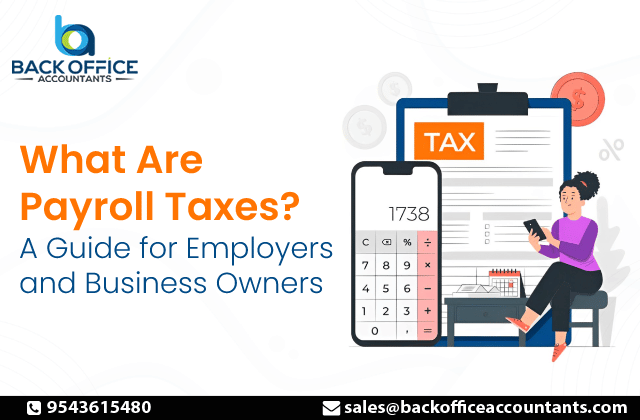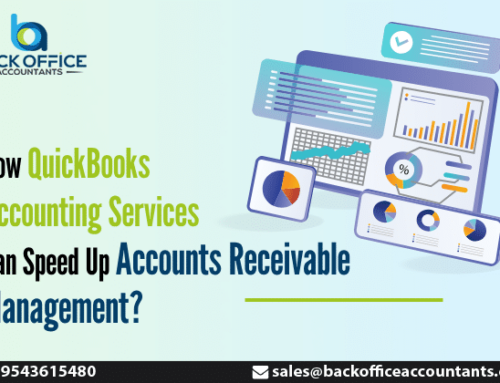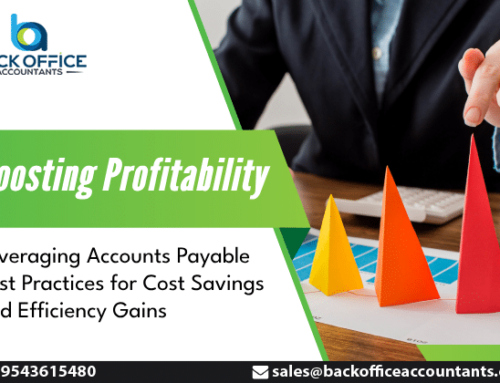Payroll taxes have become a hard nut to crack for most start-ups and SMBs – necessarily so. For the less experienced payroll taxes can be a perennial suction pit. At the same time, for a business that has sunk its teeth into corporate taxes, payroll taxes are an opportunity to lessen the burden. The difference not only is the experience in business but also the expertise of accounting teams that thoroughly implement the right procedure to simplify the payroll taxes and eliminate potential pitfalls.
So how can one make the most out of payroll taxes? Well, the first step is to make one self-aware of the payroll taxes and the opportunities they present in improving the bottom line. If we are a Startup or an SMB we would begin our journey at the start precisely this point and this blog aims to be such point for business owners and employers.
With the inputs from accounting experts at Back Office Accountants, we aim to provide all the information about payroll taxes in a series of two blogs.
What are payroll taxes?
Payroll taxes are the taxes that are taken out by the employer every time a payroll is run i.e. before distributing wages or salary to the employee. The employer holds a percentage of the employee’s tax towards federal, state and even local taxes which also include social security and medicare taxes.
In the United States, Payroll taxes usually comprises medicare and social security taxes which both employers and employee split the taxes and pay the shared tax amounts. Outside the states, the term payroll taxes may vary greatly depending upon the specific law of the land. Here’s how payroll taxes can differ from country to country:
- In a few countries payroll taxes and employer taxes are the same. The salary drawn by the employee is taxable and this is held by employers from the gross salary.
- In the US, payroll tax refers to the medicare tax and federal society tax. Part of these taxes are withheld by the employer from the gross salary, matched amount is combined and paid to the government. In addition to this, both employees and employers have to pay additional taxes. Federal income tax and unemployment tax are to be paid by employers, state income tax, school district taxes and state disability insurance tax may have to be paid by the employees.
By this point m we need to give you two clarifications regarding these taxes:
- Individual income tax is the personal income tax that is different to payroll tax. Income tax is levied on salaries wages and other types of income and is used to fund public services and goods, and pay for law enforcement and other liabilities. Payroll taxes collected from employers and employees are used to fund social security and medicare for the populace. Employers again have to pay federal and state unemployment taxes in addition to payroll.
- Medicare and social security tax, federal income tax and applicable local state tax are to be paid by employees. Federal and state unemployment tax, medicare tax, security tax and applicable local taxes are to be paid by employers.
The above information is for abusing business owners or an employer. If you are already in the business and are looking to simplify the payroll taxes, and make your life easier during tax season then here are a few tips that can help you do so:
Ensure your compliance with IRS: The first step in the payroll game is to verify if your documents are in line with IRS compliance. Proper classification of the employees and their salary types, the right employer identification number (EIN) and an adequate understanding of labour laws are basic tenets of this step. To verify your EAN, you can directly call the IRS in case you need help. While you do so, also obtain local or state IDs as they are needed in case of local tax deductions.
Consistent pay schedule and salary status: Wage status and pay frequency are two key factors that must be taken into account in the payroll. While pay frequency is when and how often an employee gets paid, salary status is the computation of the wages (hourly or salary). Take the local laws into consideration before you pick one and stay consistent.
Set up a payroll system: A payroll system is an engine room which calculates the taxes and manages the entire taxes for you. Any business owner can go three ways about the payroll system:
- Manual: Manual payroll system is performed by the in-house resources by hand. Naturally, it sis less efficient and is prone to errors but is a cost-effective way of payroll management.
- Outsourced payroll management: Remote accounting firms with expertise in payroll management offer outsourced payroll management where they handle everything from processing checks to handling all types of tax obligations.
- Automated payroll management: Payroll software overseen and managed by manual resources combines both manual and automation with flare. Cloud accounting software today come up with payroll management integrations that can manage payroll.
Have a standard manual for payroll policy: To keep everyone on the same page and ensure consistency, have a standard manual of payroll policies regarding payroll period, benefits and other key details to avoid potential problems in the future.
Have a plan, always: Most small businesses offer attractive benefits and overtime pay, retirement and vacation contribution. Though one can afford all the benefits they must always be planned to eliminate the possibility of complications in tax obligations.
Store and record everything: Payroll is not where you ignore and overlook records without experiencing a headache during tax time. To obtain all the required documentation (W-2, W-4 & tax forms) and ensure their storage for at recommended period post-termination. Ensure accurate and thorough records of the amounts and dates of your tax deposits made.
Keep a close eye on cash flow: Lack of consistent cash flow is the most common problem that leads to overstaffing, overpaying and the most dreaded – lack of cash in hand for processing. Monitoring your cash flow and tweaking it based on your current payroll demands is the first step you need to take in this regard.
Refining your Accounts Payable, and Accounts Receivable to aid cash flow is always recommended to prevent this common problem. If you are looking to outsource payroll processing, the easiest way to solve this problem is to choose a remote accounting firm that specializes in AP, AR and payroll processing like sus at Back Office Accountants . This way you can effectively manage your payroll and prevent potential cash flow problems by making necessary corrective in your payables and receivables. In our next blog on Back Office Accountants, we will delve deep into the optimization part of payroll taxes and show you how can simplify the entire process with the right policies and support.








